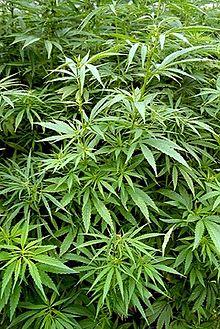In the ever-evolving landscape of cannabis culture, the phrase “high on cannabis” evokes a spectrum of interpretations, experiences, and even misconceptions. For some, it conjures images of euphoric laughter and carefree moments, while for others, it may signal a deeper connection to creativity or introspection. As society increasingly embraces this versatile plant—once relegated to the shadows of legality—conversations surrounding its effects and benefits are moving to the forefront. This article ventures into the kaleidoscopic world of cannabis highs, exploring not just the science behind the sensations but also the cultural narratives that shape our understanding. Whether you’re a seasoned enthusiast, a curious novice, or simply a spectator in this burgeoning realm, join us as we navigate the multifaceted dimensions of experiencing life “high on cannabis.”
Table of Contents
- Understanding the Effects of Cannabis on the Mind and Body
- Navigating the Spectrum of Cannabis Strains for Optimal Experiences
- Safety First: Best Practices for Responsible Cannabis Consumption
- Enhancing Your Experience: Pairing Cannabis with Activities and Environments
- Q&A
- Concluding Remarks
Understanding the Effects of Cannabis on the Mind and Body
The influence of cannabis on our physiological and psychological landscapes is profound and multi-layered. Users often report a spectrum of sensations ranging from heightened creativity and euphoria to relaxation and introspection. As the cannabinoids interact with the endocannabinoid system, they can trigger various effects on mood, perception, and overall mental state. It’s essential to understand that these effects can vary significantly depending on factors such as dosage, strain, and individual tolerance levels. For instance, while some may find relief from anxiety and stress through moderate consumption, others may experience heightened levels of paranoia or confusion.
On the physical front, cannabis impacts various systems in the body, resulting in a combination of therapeutic and, at times, adverse outcomes. Regular users often cite pain relief, increased appetite, and muscle relaxation as beneficial effects. Conversely, side effects like dry mouth, increased heart rate, and in some cases, impaired memory function can occur. To simplify these interactions, here’s a brief overview:
| Effect | Type | Notes |
|---|---|---|
| Euphoria | Positive | Commonly experienced, varies by user. |
| Relaxation | Positive | Helps to alleviate stress and tension. |
| Anxiety | Negative | Can be heightened in some users. |
| Dry Mouth | Side Effect | Common and often manageable. |
| Increased Appetite | Positive | Popularly known as “the munchies.” |
Navigating the Spectrum of Cannabis Strains for Optimal Experiences
As you embark on your journey through the diverse world of cannabis strains, understanding the wide spectrum of options available is crucial for achieving your desired experience. Different strains are often categorized into three main types: Indica, Sativa, and Hybrids. Each has its unique effects and benefits. Indicas are generally known for their calming and relaxing properties, perfect for winding down after a long day. Sativas, on the other hand, tend to be more energizing and uplifting, making them suitable for social gatherings or creative endeavors. Hybrids offer a blend of both worlds, allowing users to tailor their experience according to the specific effects they seek.
In addition to strain type, factors such as terpenes and cannabinoid profiles play a significant role in determining your experience. For example:
| Terpene | Effect | Common Strains |
|---|---|---|
| Myrcene | Relaxing, Sedative | Granddaddy Purple, Bubba Kush |
| Limonene | Uplifting, Stress Relief | Super Lemon Haze, Lemon Skunk |
| Pinene | Memory Enhancement, Alertness | Jack Herer, Pineapple Express |
By recognizing the interplay between strain types, terpenes, and personal preferences, you can effectively curate an experience that aligns with your mood or activity. Whether you’re in pursuit of relaxation, creativity, or social connection, each strain offers a unique journey, allowing users to explore the wonderful spectrum of cannabis and its myriad benefits.
Safety First: Best Practices for Responsible Cannabis Consumption
Responsible cannabis consumption is crucial to ensuring a positive experience while minimizing potential risks. It’s vital to know your limits and start low, especially if you’re a novice user. Consider the following best practices for a safe journey:
- Know Your Strain: Different strains have varying effects. Research whether you’re choosing an indica, sativa, or hybrid.
- Set & Setting: Consume in a comfortable and safe environment, preferably with trusted friends.
- Stay Hydrated: Drink plenty of water, as cannabis can lead to dry mouth and dehydration.
- Use Lab-Tested Products: Ensure that any cannabis products are tested for quality and purity to avoid unwanted additives.
Additionally, moderation is key. Follow consumption guidelines and recognize that everyone’s tolerance levels differ. If consuming edibles, be particularly mindful, as these can take longer to affect you. Keep the following tips in mind:
- Wait Before Redosing: Edibles can take up to 2 hours to kick in; patience is essential.
- Track Your Dosage: Note the amount consumed to avoid overindulgence.
- Have a Plan: Arrange for transportation or have a sober friend available if you plan on consuming outside the home.
| Best Practice | Description |
|---|---|
| Start Low and Go Slow | Begin with a small dosage to gauge your body’s reaction. |
| Stay Informed | Regularly educate yourself about cannabis and its effects. |
Enhancing Your Experience: Pairing Cannabis with Activities and Environments
Integrating cannabis into your daily activities can elevate both your mood and the overall experience. Whether you’re indulging in a creative hobby or simply unwinding after a long day, the right strain can enhance your enjoyment immensely. Consider these activities paired with their ideal cannabis types:
| Activity | Ideal Strain | Effects |
|---|---|---|
| Art and Crafting | Sativa-Dominant | Boosts creativity, enhances focus |
| Yoga or Meditation | Indica | Promotes relaxation, deepens mindfulness |
| Outdoor Adventures | Hybrid | Increases energy, elevates mood |
Moreover, the right environment can complement your cannabis experience, making your moments more enjoyable. Whether you’re lounging at home or enjoying the great outdoors, tailor your setting to the type of high you seek:
- At Home: Create a cozy corner with soft lighting, calming scents, and comfortable seating to set a serene backdrop for deeper introspection.
- In Nature: Choose tranquil spots like a park or beach to fully embrace the elements, enriching the sensory experience that nature provides.
- Social Gatherings: Opt for lively environments like music festivals or barbecues where the social buzz can enhance the euphoric effects of cannabis.
Q&A
Article Title: High on Cannabis: Understanding the Experience
Q1: What does it mean to be “high on cannabis”?
A1: Being “high on cannabis” refers to the altered state of consciousness that users experience after consuming cannabis, primarily due to its psychoactive ingredient, tetrahydrocannabinol (THC). This state can lead to feelings of euphoria, relaxation, heightened sensory perception, and sometimes altered time perception, among other effects.
Q2: How quickly do the effects of cannabis set in?
A2: The onset of effects can vary depending on the method of consumption. When smoking or vaping, users typically feel the effects within minutes. Edibles, on the other hand, may take anywhere from 30 minutes to two hours to kick in, as they must be digested and metabolized first.
Q3: Are there different types of highs associated with cannabis?
A3: Yes, the experience can differ significantly depending on the strain of cannabis. Indica strains are often associated with a more relaxing and sedative high, ideal for winding down. Sativa strains, in contrast, tend to provide a more uplifting and energizing experience, often stimulating creativity and sociability. Hybrid strains can offer a combination of both effects.
Q4: Can everyone safely experience being high on cannabis?
A4: While many people enjoy cannabis without adverse effects, individual experiences can vary widely. Factors such as body chemistry, dosage, tolerance, and mental health can influence how one responds. Some may experience anxiety or paranoia, especially with higher doses or potent strains. It’s important for individuals, particularly novices, to start with low doses and understand their own limits.
Q5: What are the potential benefits of being high on cannabis?
A5: Many users report positive benefits, including enhanced mood, reduced stress, relief from chronic pain, and improved sleep quality. Some studies suggest that cannabis can help with issues such as anxiety and depression, although scientific research is ongoing. The experience can also foster a deeper appreciation of art, nature, and music for some individuals.
Q6: Are there any drawbacks or risks to being high on cannabis?
A6: Yes, there are both short-term and long-term risks associated with cannabis use. Short-term effects may include impaired memory, coordination, and judgment, which can be dangerous, especially when driving. Long-term heavy use can lead to dependency issues in some individuals and may exacerbate mental health conditions. It’s crucial for users to approach consumption mindfully and responsibly.
Q7: How can one ensure a positive experience when using cannabis?
A7: To ensure a positive experience, users should be informed about the strain they are consuming and its effects, start with a low dosage, and choose a safe and comfortable environment. Additionally, being in the company of trusted friends can enhance the experience and provide support if needed. staying hydrated and having healthy snacks on hand can contribute to overall comfort during the high.
Q8: What is the future of cannabis consumption and its societal perception?
A8: As cannabis legalization expands globally, perceptions are shifting. More communities are recognizing its medicinal potential, while others are embracing it as a recreational choice. This could pave the way for increased research, a deeper understanding of its effects, and a more nuanced approach to its use in society. The future may also see innovations in consumption methods and forms, aiding in tailoring experiences to individual preferences and needs.
Conclusion: Being “high on cannabis” is a unique and multifaceted experience influenced by many factors. Understanding these elements can help individuals navigate their cannabis journey safely and enjoyably.
Concluding Remarks
In a world where perceptions of cannabis are evolving at a breakneck pace, understanding the experience of being high transcends mere anecdotes and enters the realm of science, culture, and personal exploration. As we conclude our journey through the effects, societal attitudes, and the multifaceted role of this plant in both recreation and healing, it becomes clear that being “high on cannabis” is not merely a state of euphoria, but a tapestry woven from individual narratives, cultural histories, and ongoing research. It invites us to ponder the broader implications of cannabis use in our lives and communities.
As society grapples with legalities, health implications, and social perceptions, one thing remains certain: the conversation surrounding cannabis is far from over. With each new study and personal story, we come closer to understanding the complexities of this plant and the experiences it brings. So, whether you’re a seasoned ganja enthusiast or simply curious, keep the dialogue alive. Embrace the nuances, share your insights, and let curiosity guide you through this ever-evolving landscape. After all, in the world of cannabis, there’s always more to explore.



